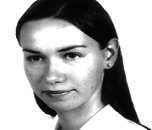Scientific Program

Joanna Bojarska
Zeromskiego,Poland
Title: Novel biologically important supramolecular synthons in short peptides
Biography:
Joanna Bojarska has completed his PhD (“Structure of gramicidin D ionic channels in crystals of its complexes with cesium and rubidium”) at the age of 27 years from Technical University, Poland. She is currently working at the Institute of General and Ecological Chemistry at the same University. She has published more than 35 papers in reputed journals, e-book and 100 international conference communications. Her publications reflect her research interests in small and macrosupramolecular crystallography of biomolecules. She is a member of The European Peptide Society. She is awarded by verified certificate of Harvard University (Biochemistry upper level course), Awards of the Dean of Faculty of Chemistry and the Rector of the Lodz University of Technology for outstanding achievements in science, teaching and popularization of crystallographic science.
Abstract
Short peptides have attracted an increasing interest due to their wide applications, inter alia in anticancer therapy or supramolecular biofunctional materials [1-3]. Amino acids and peptides in living systems, whose architecture is controlled by non-covalent interactions, have a valuable input in understanding highly complex biological processes. Supramolecular interactions in precise co-operation just like virtuosos play a symphony of life. Supramolecular chemistry of biomolecules is crucial in interpretation of biological phenomena. Design of smart bio-materials or drugs should be based on the knowledge of weak interactions at molecular and higher topological level. Nevertheless, the detailed knowledge on this subject is still challenging. The concept of supramolecular synthons, recurring patterns of inter-contacts between functional groups, is useful in small supramolecules and in understanding of the interplay of biocomplexes (ligand–protein cocrystals, between different scaffolds in the ligand molecules and the main/side chain of proteins in the active sites). This e-poster focuses on synthesis and supramolecular crystallography of linear and cyclic short peptides, supported by theoretical methods, taking a holistic look at their landscape in the context of subtle supramolecular effects on the basis of our own research and those form the databases (CSD/PDB). The aim is to present the potential uses of supramolecular synthon idea, which evolves in various fields in an intriguing manner, in relation to short peptides. Novel biologically important synthons, e.g. created by weak cyclopropyl or Fmoc-synthons, will be discussed in detail. We hope that our study will contribute to the development of supramolecular chemistry of peptides and also in protein recognition or development of advanced therapeutic approaches.
- Peptide Structure and Function
- Synthetic and Non-Natural Peptide Backbones
- Peptide Based Formulations
- Peptide Synthesis and Delivery
- Peptide Membrane Interaction

